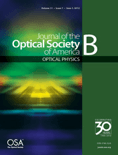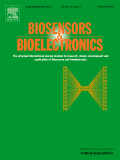
Photonic Sensors
Scope & Guideline
Pioneering Breakthroughs in Materials and Optics
Introduction
Aims and Scopes
- Optical Fiber Sensors:
The journal extensively covers research on optical fiber sensors, including various configurations like Fiber Bragg Grating (FBG) sensors and Mach-Zehnder interferometers, which are pivotal for measuring temperature, strain, and other physical parameters. - Plasmonic and Nanomaterial-Based Sensors:
A significant focus is on plasmonic sensors utilizing nanomaterials, particularly for biochemical applications. This includes surface plasmon resonance (SPR) sensors that detect biomolecules and environmental changes, demonstrating the integration of nanotechnology with photonics. - Biochemical and Medical Applications:
Research on sensors for biomedical applications, including cancer detection, immunoassays, and other theranostic applications. This area emphasizes the use of optical sensors in medical diagnostics and treatment monitoring. - Gas and Environmental Sensing:
The journal addresses the development of sensors for detecting gases and environmental parameters, including the use of optical fibers for monitoring air quality and detecting specific gases using spectroscopic methods. - Advanced Sensing Techniques:
Innovative methodologies such as multi-wavelength sensing, nonlinear optical effects, and new materials for enhancing sensor performance are explored, showcasing the journal's commitment to advancing sensing technologies.
Trending and Emerging
- Integration of Machine Learning with Sensing Technologies:
There is a growing trend in incorporating machine learning algorithms for data analysis and predictive modeling in optical sensing systems. This approach enhances the accuracy and efficiency of sensor readings, enabling smarter sensing solutions. - Micro and Nano-Structured Sensors:
The emergence of micro and nano-scale sensors is notable, with a focus on their application in biomedicine and environmental monitoring. These sensors offer improved sensitivity and specificity, making them ideal for complex sensing environments. - Sustainable and Environmentally Friendly Materials:
Research is increasingly directed towards the use of sustainable materials in sensor fabrication. This trend reflects a broader commitment to environmental sustainability within the photonics community, focusing on reducing the ecological footprint of sensor technologies. - Interdisciplinary Applications:
The journal is seeing a rise in interdisciplinary research that combines photonic sensing with fields like biotechnology, environmental science, and materials engineering. This cross-pollination of ideas is fostering innovative solutions to complex challenges. - Real-Time and Remote Sensing Technologies:
There is an upward trend in developing sensors capable of real-time monitoring and remote sensing applications, driven by advancements in communication technology and the Internet of Things (IoT). This area is critical for various applications from industrial monitoring to health diagnostics.
Declining or Waning
- Traditional Sensor Designs:
There is a noticeable decrease in research focused on traditional optical sensor designs that do not incorporate modern materials or techniques. This shift suggests a move towards more innovative and versatile sensing solutions. - Basic Optical Measurement Techniques:
Basic optical measurement techniques that lack advanced analytical capabilities are becoming less prominent. Researchers are gravitating towards more complex systems that provide higher sensitivity and specificity. - Static Sensing Applications:
Static applications of optical sensors, particularly those that do not leverage real-time data analysis or dynamic measurements, are waning. The field is increasingly favoring sensors that can provide real-time feedback and adaptive responses.
Similar Journals

JOURNAL OF THE OPTICAL SOCIETY OF AMERICA B-OPTICAL PHYSICS
Leading the Charge in Optical Physics InnovationJOURNAL OF THE OPTICAL SOCIETY OF AMERICA B-OPTICAL PHYSICS, published by Optica Publishing Group, serves as a leading platform for groundbreaking research in the fields of optical physics, atomic and molecular physics, and statistical and nonlinear physics. With an ISSN of 0740-3224 and an E-ISSN of 1520-8540, this esteemed journal has been in circulation since 1984 and is dedicated to advancing the understanding of optical phenomena and related technologies. It holds a commendable position in the academic community, with a 2023 Scopus ranking reflecting its significance—placing it in the top quartile for both Atomic and Molecular Physics and Statistical and Nonlinear Physics. Although it is not an open-access publication, it provides extensive access options to ensure that research is disseminated effectively within the scientific community. This journal is instrumental for researchers, professionals, and students alike, aiming to keep them informed of the latest advancements and trends in optical science. With a convergence of expertise and innovation, JOSA B continues to play a pivotal role in shaping the future of optical research.

BIOSENSORS & BIOELECTRONICS
Unveiling the Potential of Bioengineering TechnologiesBIOSENSORS & BIOELECTRONICS, published by Elsevier Advanced Technology, is at the forefront of research and innovation in the realms of biomedical engineering, biophysics, and biotechnology. Established in 1990, this esteemed journal has established itself as a premier platform, receiving a prestigious Q1 ranking across multiple categories, including Electrochemistry and Nanoscience, reflecting its critical impact on advancing scientific knowledge and technology. With an impressive range of topics, including the latest trends in biosensor development and bioelectronic application, it serves as an invaluable resource for researchers, professionals, and students alike, facilitating collaborative dialogue and innovative solutions. Though primarily subscription-based, the journal is accessible from its UK headquarters in Oxford, promising rigorous peer-reviewed articles that inform future trends and applications in this dynamic field.

Optical Materials Express
Connecting global scholars in optical materials innovation.Optical Materials Express is a leading open-access journal dedicated to the rapid dissemination of research in the field of optical materials, published by the esteemed Optica Publishing Group. Since its inception in 2012, the journal has played a pivotal role in advancing knowledge and innovation in Electronic, Optical, and Magnetic Materials, currently maintaining a commendable Q2 classification in the 2023 category rankings. With a Scopus rank of 86 out of 284 in its category, the journal proudly boasts a 69th percentile positioning, underscoring its impact and relevance within the scientific community. The journal publishes high-quality, peer-reviewed articles that explore both fundamental and applied aspects of optical materials, making it an essential resource for researchers, professionals, and students alike. Located in Washington, DC, and accessible to a global audience, Optical Materials Express continues to foster collaboration and innovation among scholars in this vibrant field.

OPTICA APPLICATA
Empowering Knowledge in Optical ApplicationsOPTICA APPLICATA, published by Wroclaw University of Science and Technology, is a crucial platform for advancing knowledge in the fields of Atomic and Molecular Physics and Optics. With an ISSN of 0078-5466 and an E-ISSN of 1899-7015, this journal serves as a vital resource for researchers, professionals, and students seeking to explore the latest developments and applications in optical science and engineering. Although currently categorized in the fourth quartile in both Atomic and Molecular Physics and Electronic, Optical and Magnetic Materials, its commitment to publishing high-quality research articles, reviews, and technical notes remains unwavering. The journal covers diverse topics from practical applications to theoretical insights and fosters a collaborative environment for global contributors. While it does not offer an open access option, the journal is accessible through university libraries and institutional subscriptions. With an eye towards bridging academic research with real-world applications, OPTICA APPLICATA is well-positioned to influence advancements in photonics and materials science through ongoing issues from 1988 to 2024.

APPLIED OPTICS
Unveiling the Science of Light and Its ApplicationsApplied Optics, published by Optica Publishing Group, is a prestigious journal dedicated to the field of optics and photonics. With an ISSN of 1559-128X and an E-ISSN of 2155-3165, this journal serves as a critical platform for researchers, professionals, and students eager to disseminate innovative findings and advancements in applied optics. Established in 1962, it has maintained a significant presence in the academic community, currently holding a Q2 category ranking in various disciplines including Atomic and Molecular Physics, Electrical and Electronic Engineering, and Miscellaneous Engineering as per the 2023 metrics. The journal's reputation is underscored by its solid Scopus rankings, attesting to its influential research output. While not an open-access journal, it continues to offer vital insights and discussions on the latest research topics that are critical to the advancement of technologies in optics, ensuring accessibility to vital knowledge for those within the field.

SENSORS AND ACTUATORS B-CHEMICAL
Driving Excellence in Sensor and Actuator Research.SENSORS AND ACTUATORS B-CHEMICAL, published by ELSEVIER SCIENCE SA, is a premier scientific journal that occupies a vital niche in the field of materials science and engineering. With an impressive impact factor and ranking in the Q1 category across multiple disciplines, including Condensed Matter Physics, Electrical and Electronic Engineering, and Materials Chemistry, this journal is recognized as a leading source of innovative research and developments in sensor technologies and their chemical applications. The journal disseminates high-quality articles with a focus on the design, fabrication, and application of sensors and actuators, promoting valuable insights that cater to researchers, professionals, and students alike. As a testament to its scholarly significance, SENSORS AND ACTUATORS B-CHEMICAL remains pivotal for those seeking to advance their understanding of electronic, optical, and magnetic materials. The journal is accessible primarily through subscription, ensuring a wide reach to the academic community, and contributing significantly to the ongoing exploration and interdisciplinary collaboration in this dynamic field.

JOURNAL OF OPTOELECTRONICS AND ADVANCED MATERIALS
Advancing the Frontiers of Optoelectronics and Materials ScienceJOURNAL OF OPTOELECTRONICS AND ADVANCED MATERIALS, published by the NATL INST OPTOELECTRONICS in Romania, is an esteemed academic journal dedicated to disseminating innovative research in the fields of optoelectronics and advanced materials. With an ISSN of 1454-4164 and E-ISSN 1841-7132, the journal provides a platform for researchers to share their findings and technological advancements from 1999 to 2024. Despite being placed in the Q4 quartile across several categories—including Atomic and Molecular Physics, Condensed Matter Physics, and Electrical and Electronic Engineering—the journal serves as an essential resource for highlighting significant developments in its respective fields. Researchers and professionals may find valuable insights that foster collaboration and inspire further investigation, thereby contributing to the continuous evolution of optoelectronics and materials science.

JOURNAL OF MODERN OPTICS
Empowering Researchers in the Realm of LightJOURNAL OF MODERN OPTICS, published by Taylor & Francis Ltd, stands as a prominent bi-monthly journal contributing to the fields of Atomic and Molecular Physics and Optics. With an ISSN of 0950-0340 and an E-ISSN of 1362-3044, this journal aims to disseminate high-quality research that pushes the boundaries of optical science and its applications. Since its inception in 1981, and particularly throughout its publications from 1987 to 2024, the journal has consistently published influential studies that are essential for both academic researchers and industry professionals. Ranked in the Q3 quartile for the 2023 category of Atomic and Molecular Physics and Optics, it has a Scopus ranking of #133 out of 224, indicating its steady presence and relevance in the scientific community. Although it does not offer Open Access options, readers can access its rich repository of literature that delves into innovative optical methods, technological advancements, and theoretical frameworks. The JOURNAL OF MODERN OPTICS is an indispensable resource for those seeking to advance their knowledge and research in modern optical science.

Optoelectronics Letters
Showcasing Breakthroughs in Optical and Electronic MaterialsOptoelectronics Letters, published by Tianjin University of Technology, is an esteemed platform for the dissemination of innovative research within the fields of atomic and molecular physics, optics, condensed matter physics, and electrical engineering. With its inaugural publication in 2007 and a convergence period extending to 2024, this journal aims to foster scholarly communication and collaboration among researchers and professionals. Although currently lacking an impact factor, it serves a vital niche in the rapidly evolving field of optoelectronics, evidenced by its categorization in the fourth quartile for various physics disciplines and the third quartile in electrical and electronic engineering. Given its ranking dynamics in Scopus, it is an emerging choice for authors seeking to convey their findings on electronic, optical, and magnetic materials. Researchers, students, and industry professionals alike can benefit from its open access options, encouraging a broad dissemination of cutting-edge knowledge that is essential in the advancement of technology and materials science.

OPTICAL REVIEW
Exploring the Frontiers of Optics and BeyondOPTICAL REVIEW is a distinguished journal published by the Optical Society of Japan that serves as a critical platform for researchers, professionals, and students within the diverse fields of atomic and molecular physics and optics. With its ISSN 1340-6000 and E-ISSN 1349-9432, the journal has had a significant impact on the dissemination of knowledge since its inception in 1994, with a planned coverage until 2024. Although it currently holds a Q4 ranking in the 2023 category quartiles and is positioned at rank #152 out of 224 in the Scopus database, its contributions are vital for advancing optical science. This journal provides a venue for innovative research, review articles, and significant developments that drive the optical sciences forward. Although not categorized as Open Access, it remains an important resource for those seeking to deepen their knowledge and engage with leading-edge research in optics. With its base located at the Kudan-Kita Building in the heart of Tokyo, Germany, OPTICAL REVIEW is poised to continue fostering scholarly communication and collaboration on a global scale.